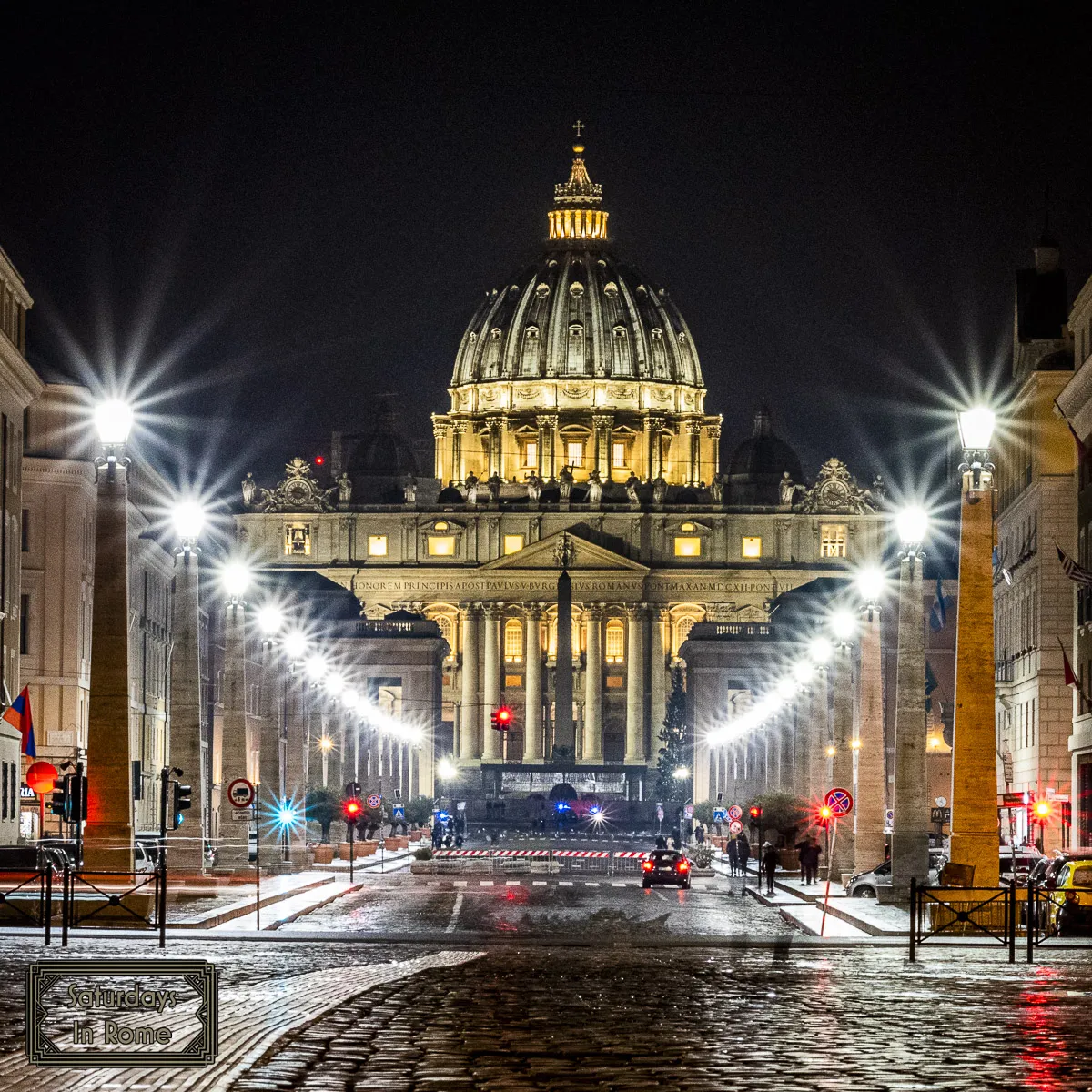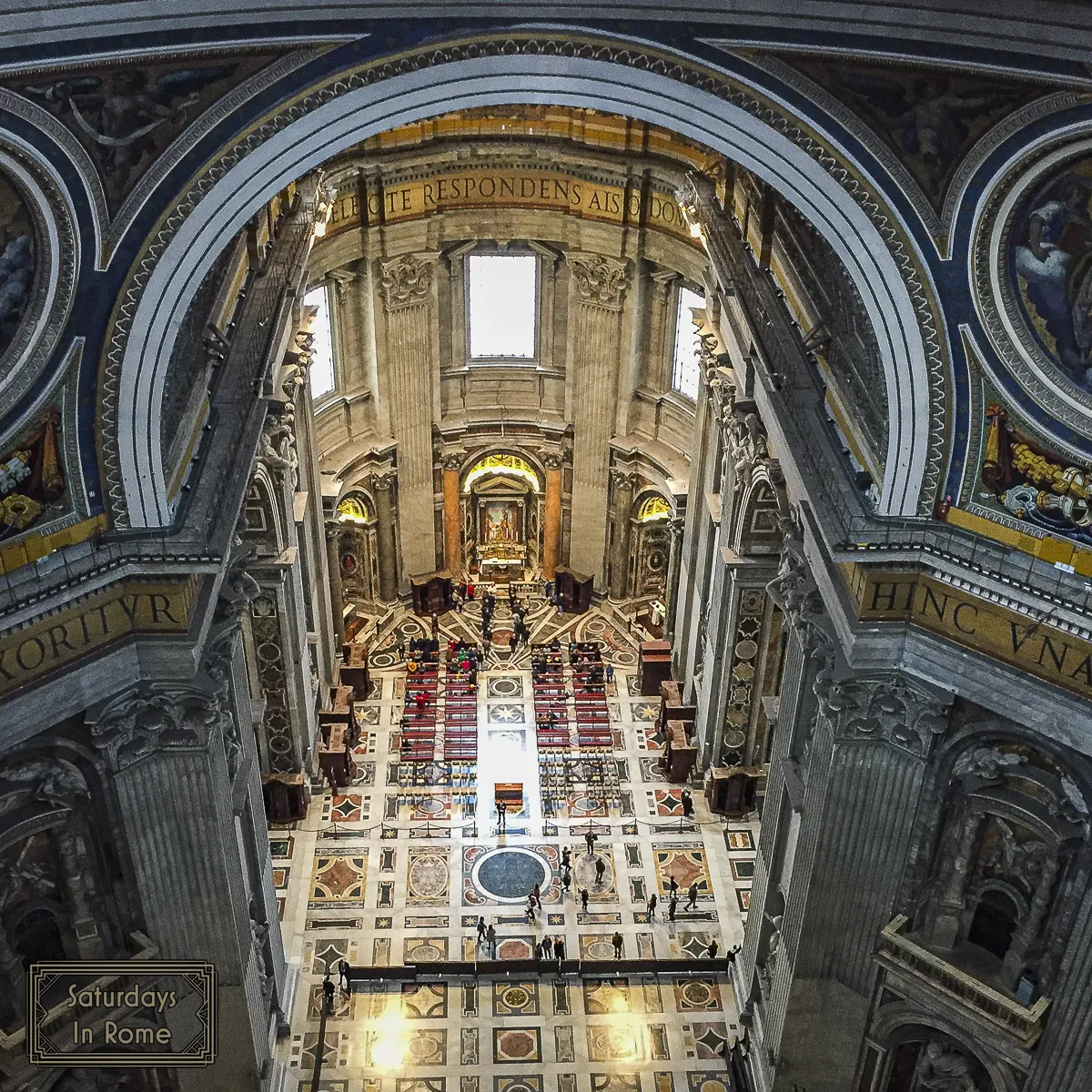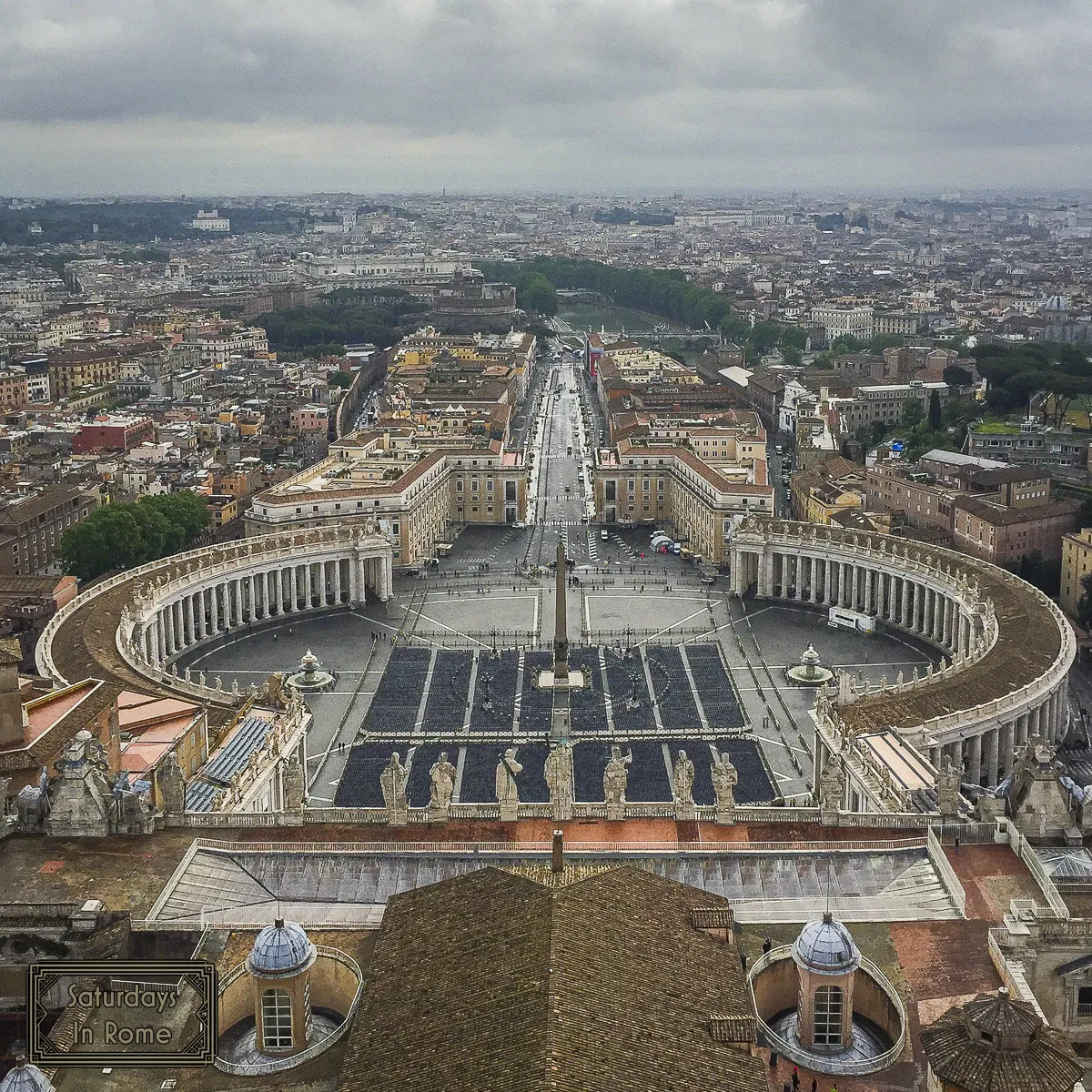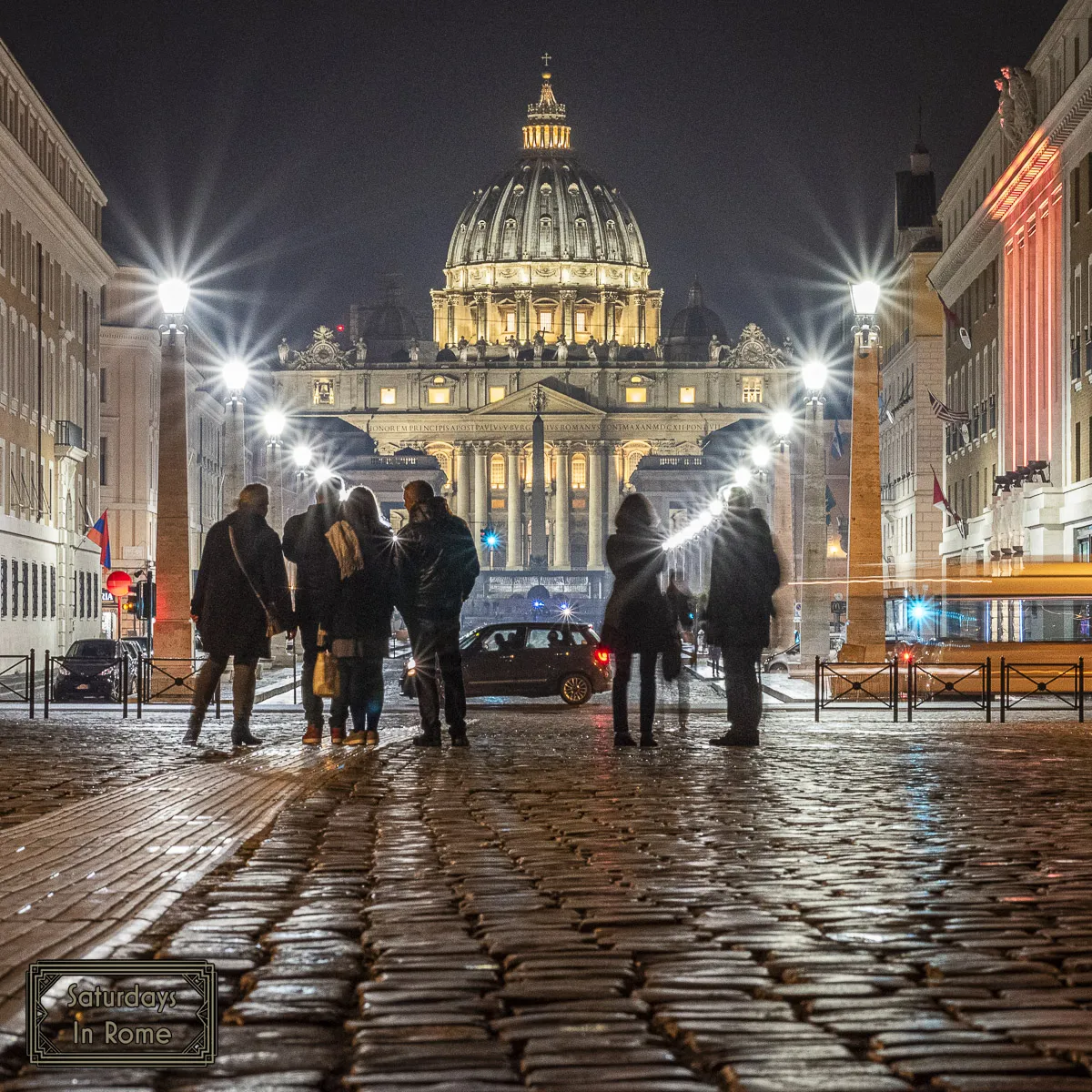Exploring Vatican City – Your Guide For Everything
Rome visitors need to include exploring Vatican City as part of their itinerary and this complete guide shows why, when and how much.

The Vatican And St. Peter’s Basilica are the smallest independent and sovereign country and the largest church in the world that you need to see. The Vatican City State is an ecclesiastical monarchy ruled by the Pope, who is the bishop of Rome and head of the Catholic Church.
Need Help Planning?
- Cheap Flights: Find The Most Affordable Flights.
- Accommodations: From 1 to 5 Stars And More.
- Car Rentals: Affordable Travel Across Italy.
- Sightseeing Tours: Explore Some Amazing Tours.
- Buying An eSIM: Stay Connected In Italy.
This post includes affiliate links.
Prior to the unification of Italy, the Pope ruled the Papal States, which had at times covered a large portion of the Italian peninsula. From the time that the country was unified in 1861 until the signing of The Lateran Treaty between the Holy See and the Kingdom of Italy, the situation was unclear and the influence the Vatican had over some or all of Italy was referred to as the “Roman Question”.
This ambiguity became clearer on February 11, 1929 when the Lateran Treaty between the Holy See and the Kingdom of Italy was signed by Mussolini on behalf of King Victor Emmanuel III and by Cardinal Secretary of State Pietro Gasparri for Pope Pius XI. The treaty created the independent state of Vatican City.
The Seven Pilgrim Churches of Rome
The tradition of visiting all seven churches was started back in the 16th century in order to combine conviviality and the sharing of a common religious experience through the discovery of the history of the early Saints. In the beginning, a few friends and acquaintances would gather before dawn and set out on their walk. At each church, there would be prayer, hymn singing, lunch breaks and a brief sermon. The path covers twelve miles in Rome, but if you aren’t interested in walking that far, public transportation and taxis can make the journey that much easier.
The “Classic Seven Pilgrim Churches”
The official list of the Seven Pilgrim Churches changed in 2000 when Pope John Paul II had changed the 7 by removing San Sebastian and adding as a replacement the Sanctuary of the Madonna of the Divine Love shrine. When I was looking at the events of the Jubilee 2025, I noticed they list the classic seven churches as the official version, leaving off the Sanctuary. I could not find any information online regarding the change back, so I asked the tour guide if San Sebastian is on the list, and she said it was and that Pope Benedict had made the change. I still can’t find anything official on this, so I suspect this has more to do with some of the more devout respecting the original 7 and not the updated version. Whatever the reason, if you have any information, please let me know!
In addition to St. Peter’s Basilica, which is the largest church in the world, there are six other basilicas that make up the Seven Pilgrim Churches of Rome:
- The Basilica of St. Sebastian Outside The Walls
- (Non-Classic) The Sanctuary of Our Lady of Divine Love
The Seven Churches Visitation is a Roman Catholic tradition to visit seven churches on the evening of Maundy Thursday during Lent, but it is also done on Wednesday of Holy Week. During the Seven Churches Visitation, the faithful visit several churches to pray before the Blessed Sacrament in each church. Depending on the timing, you might encounter church services that you can either attend or wait until they are finished, before you can have a detailed tour of the church.

The Vatican And St. Peter’s Basilica FAQs
- Is it a city or a country? Despite having the word City in its name, it is in fact an independent, sovereign state.
- Is it the smallest country in the world? Yes, it is the smallest country in the world in both population and area.
- Who lives there and can I live in Vatican City? The Vatican City Population in 2022 is about 800, which consists of the clergy who run the city, and the Swiss Guards who defend the city. Unless you are one of those two groups, you will not be allowed to live within the city walls.
- What is the currency of Vatican City? Italy and Vatican City signed a contract allowing the Vatican to use the euro as its official currency despite not being a member of the EU.
- What is the official Language of Vatican City? Italian is the official language of Vatican City and their official newspaper is published in Italian, English, French, German, Polish, Portuguese and Spanish.
Vatican City Museum
The Vatican Museums and Sistine Chapel (Musei Vaticani) are the public museums of the Vatican City. They display works from the huge collection amassed by the Catholic Church and the Papacy throughout the centuries. I wrote previously on the Vatican Museums and Sistine Chapel, so please do take a look at that post and let me know what you think.
The Vatican Necropolis
The Vatican Necropolis is an ancient Roman burial ground dating back to the third century that lies up to 35 feet below Saint Peter’s Basilica and is said to contain the grave and remains of Saint Peter, who was martyred in 64AD. The word Necropolis is Greek and means City of the Dead.

If you want to visit the Necropolis, understand that tour groups must be accompanied by a qualified guide. The groups are limited to sizes of 12 and there is a limit of 250 visitors per day. The current cost of admission is €13 and you can visit the site from Monday to Friday: 9:00 am to 6:00 pm, and on Saturday from 9:00 am – 2:00 pm.
St. Peter’s Basilica In Vatican City
Saint Peter’s Basilica is the largest church in the world, and the most important one in the Catholic world. It unites the religious faithful and lovers of art and is a major pilgrimage site for the Catholic faithful. It frequently draws crowds of tens of thousands, both in the basilica and its adjoining St. Peter’s Square, which are used for a number of masses and celebrations during the year that are presided over by the pope.
St. Peter’s Basilica is free to enter and open everyday, from April to September from 7:00 am to 7:00 pm, and from October to March from 7:00 am to 6:30 pm.
Vatican City Dress Code
The Dress Code of Vatican City is strictly enforced at St. Peter’s Basilica. No shorts, bare shoulders or miniskirts. This applies to everyone. I’ve entered with shorts on, but I’ve heard it is possible to be sent away, even if you got through security. The other important item during the summer is a hat, but from personal experience these are not allowed for men.

The Vatican And St. Peter’s Basilica Cupola
Climbing the Cupola, as seen in La Dolce Vita, is something that shouldn’t be missed if you can handle cramped spaces and a lot of stairs, because the views are amazing. The hours from April to September are 8:00 am – 6:00 pm. From October to March, 8:00 am – 4:45 pm. The cost is €10 if you want to use the elevator and only €8 if you can brave the stairs.
Visiting Vatican City And St. Peter’s Basilica
There is what seems like an unlimited number of tour operators selling tours online which is a testament to the popularity and importance of the Basilica. It is free to enter the Basilica, but the lines are unimaginable, so you need to get there early, or better yet, off-season.
I recommend that you purchase audio tours of the Basilica or simply download the Rick Steves app, which contains tours of the Sistine Chapel, St. Peter’s Basilica and the Vatican Museums. These tours will help get a handle on all of the beautiful artwork and architecture throughout the Basilica.

Vatican City Swiss Guard
I want to finish this post with The Pontifical Swiss Guard, which is the small armed force and honor guard that is maintained by the Vatican for the protection of the Pope and the area within Vatican City. To become a Swiss Guard, you must be an unmarried, Swiss and Catholic male between 18 and 30 years old and you need to have completed basic training with the Swiss Armed Forces.
They were established in 1506 under Pope Julius II and the dress uniform is of blue, red, orange and yellow with a distinctly Renaissance appearance. I had heard that the uniforms were designed by Michelangelo, but this isn’t true. The design was introduced by commandant Jules Repond in 1914. His design was influenced by 16th-century depictions of the Swiss Guard in a fresco by Jacopo Coppi.

More Articles About Exploring Vatican City And St. Peter’s Basilica
If you enjoyed this article about exploring Vatican City and St. Peter’s Basilica as much as I enjoyed writing it, please check out some of these other related posts:
- Finding The Basilica of Saint Lawrence Outside The Walls.
- The Basilica of Saint Mary Major.
- The Enduring History Of The Basilica Of St. John Lateran.
- The Papal Basilica of St. Paul Outside the Walls.
- The Basilica Of The Holy Cross In Rome Needs To Be Seen.
- The Basilica Of St. Sebastian Outside The Walls (Classic)
- The Sanctuary of Our Lady of Divine Love In Rome, Italy. (Optional)






